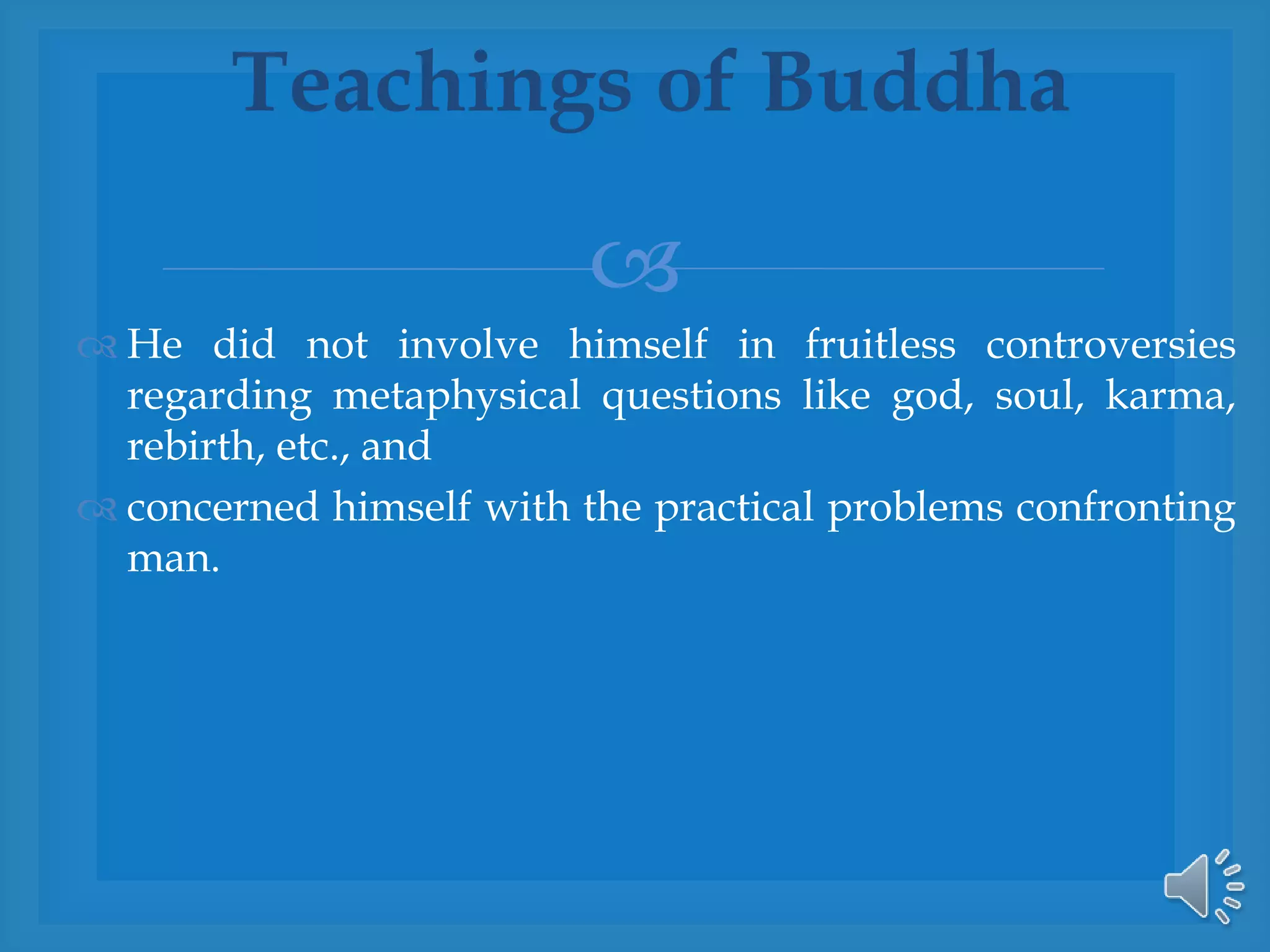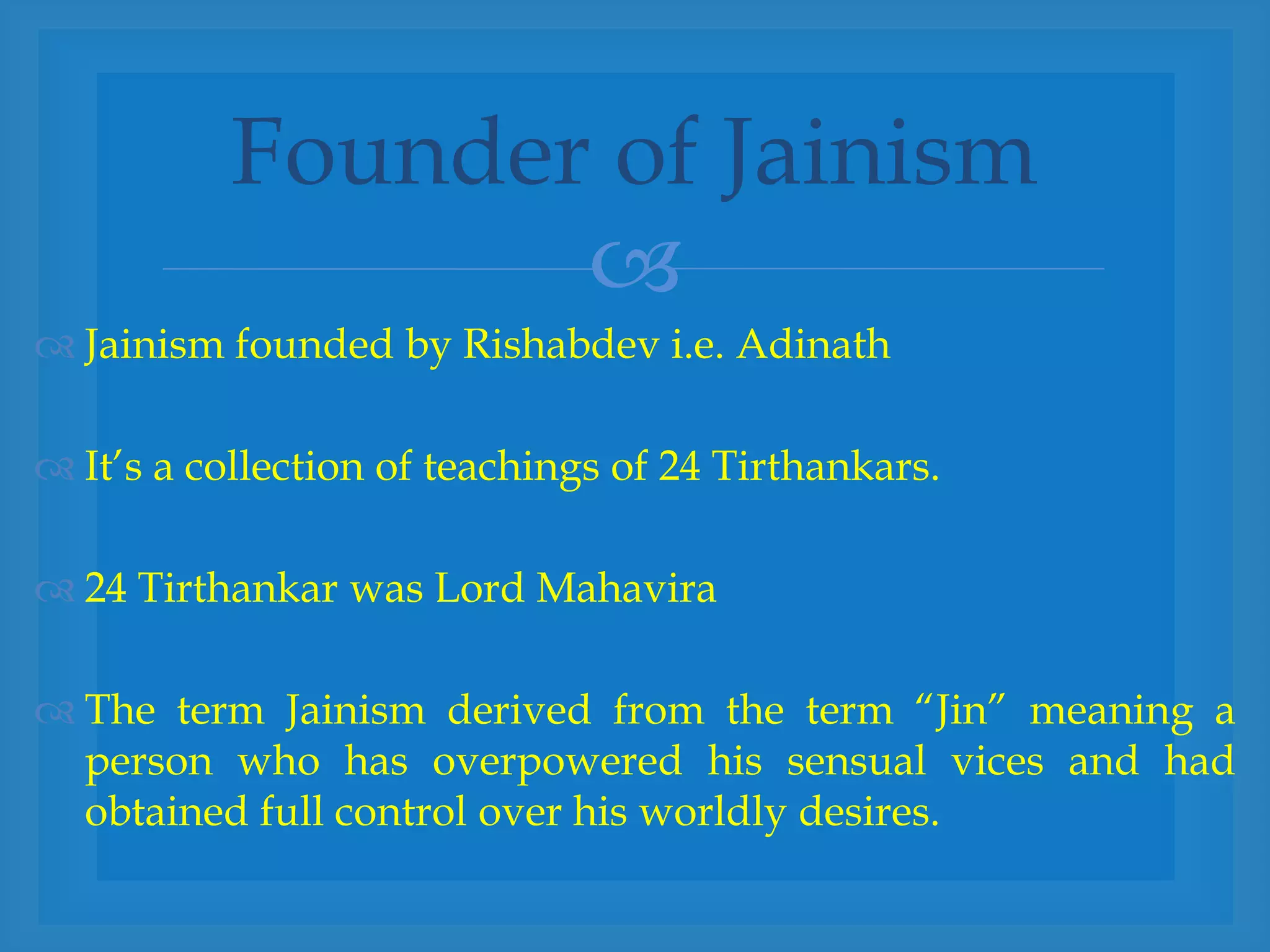In the 6th century B.C., religious unrest arose in India due to the complexity and expenses of Vedic rituals, leading to the emergence of Buddhism and Jainism as simpler alternatives for salvation. Gautama Buddha, born in 567 B.C., sought and taught enlightenment through the Four Noble Truths and the Eightfold Path, emphasizing practical ethics, social equality, and non-violence. Jainism, founded by Mahavira, emphasized ahimsa and spurned the caste system, advocating for moral living and equality among all beings.





















